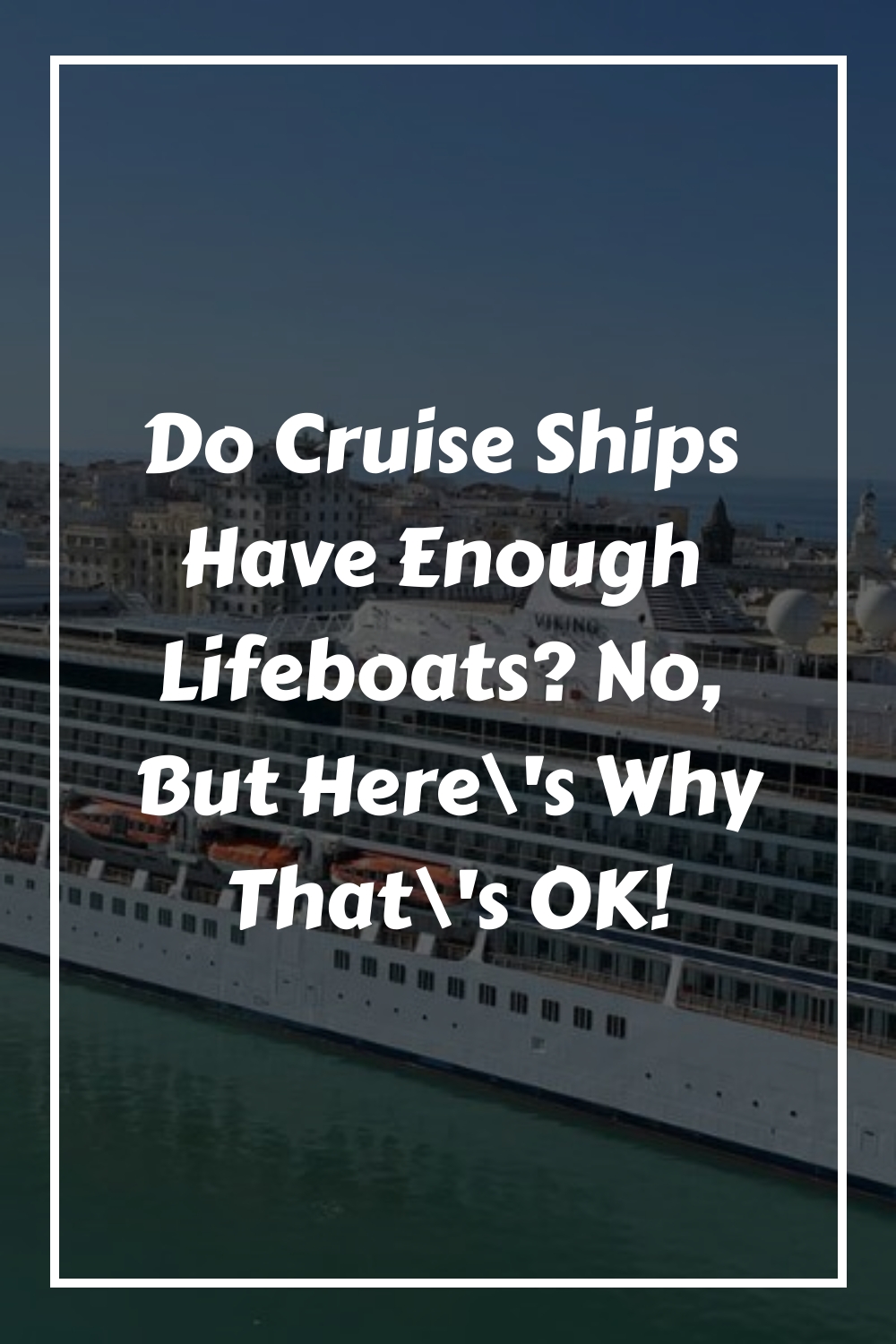Worried there aren’t enough lifeboats on a cruise ship? You’re not alone – and if you’ve seen Titanic, it’s a fair concern.
But here’s the good news: things have changed a lot since 1912. In fact, cruise ships today follow strict safety rules designed to keep every single passenger safe.
So, is there really anything to worry about? Let’s find out.
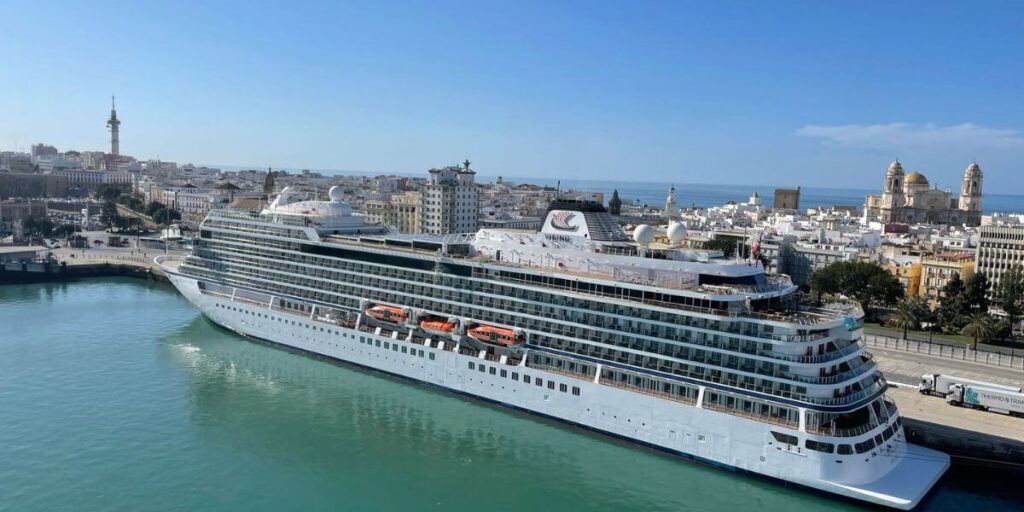
The Number of Lifeboats Depends on the Size of the Ship
There will usually be enough boats to carry every passenger onboard. Many large cruise ships have up to 20 lifeboats in total.
As well as the lifeboats, there will be a number of inflatable life rafts. Normally, these are reserved for the crew because they’re not as comfortable (and the crew may have to use slides to reach them, rather than stepping onto them from the ship’s deck.
However, on some ships, able-bodied guests would also be required to slide down a chute and into an inflatable life raft in an emergency.
Here’s a letter I received in my stateroom at the start of a cruise on Enchanted Princess. It explains how most guests are assigned lifeboats, but not all are…
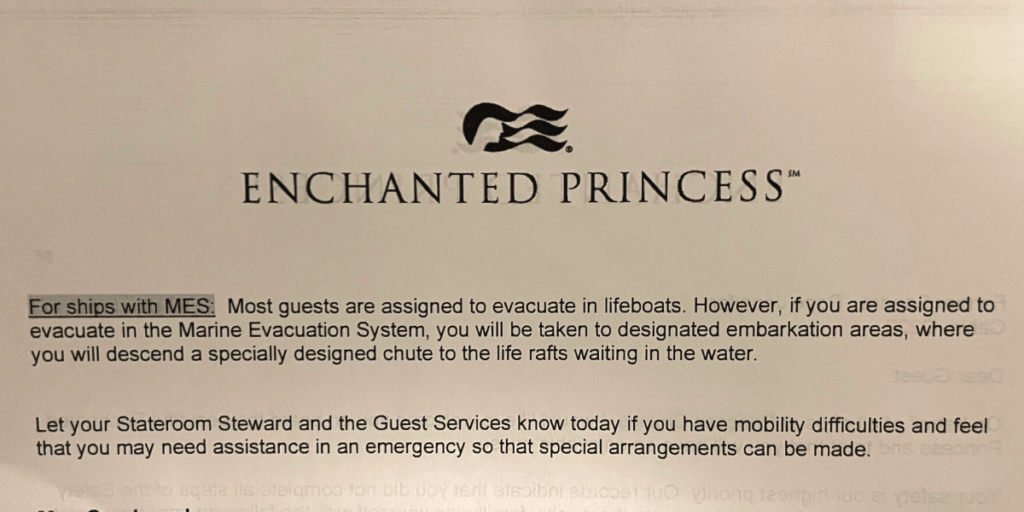
I headed out onto the deck to see what the inflatable life rafts look like before they are deployed. Here’s a photo…
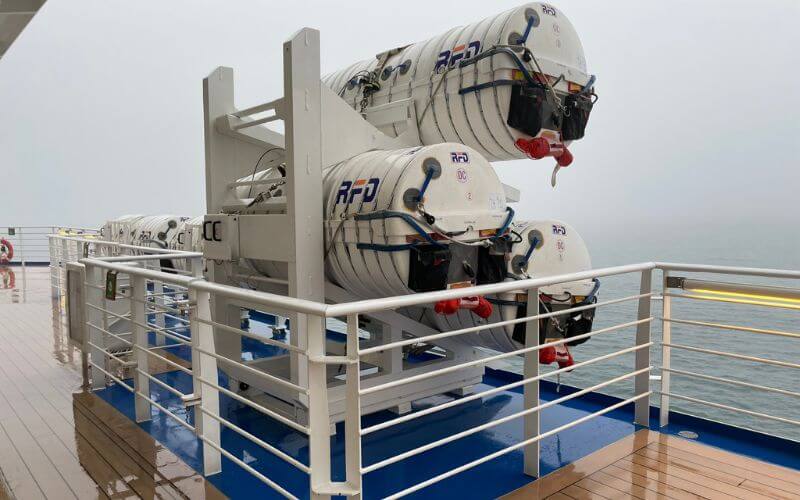
There Won’t Be Enough Lifeboats for Passengers AND Crew
Cruise ships do not usually have enough lifeboats for every last person on board, but they will normally have enough for every guest. Most crew members will use inflatable life rafts instead of lifeboats.
There is always provision for every person on board a ship to be safely rescued, but physically it would be almost impossible to provide enough lifeboats for everyone on the ship.
Lifeboats can only take up so much space along each side of the ship, and they need to be able to be lowered into the ocean.
Also, lifeboats need a person on the ship to launch them, so there has to be an alternate way for them to then evacuate the ship. They could hardly jump once the lifeboat has been lowered.
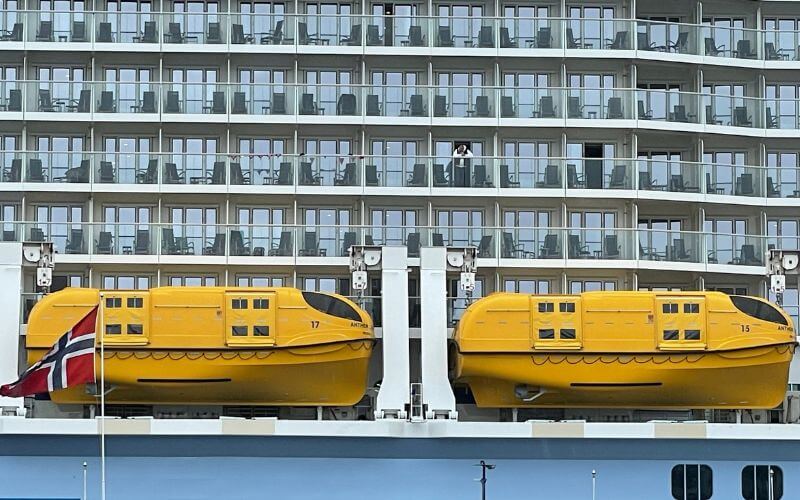
Cruise lines don’t have to provide enough lifeboats for all passengers according to law. As long as there is enough capacity for 37.5% of passengers alongside each side of the ship in lifeboats (so 75% total), then the rest can be carried in life rafts (source).
Most cruise lines choose to have the additional lifeboat capacity, though – it reassures customers and is better for them.
Life Rafts Vs Life Boats
Lifeboats are solid open boats that hang on the size of a cruise ship. Life rafts are inflatable rafts that are completely collapsible and are stored in heavy-duty canisters. Lifeboats are powered with a motor on-board while life rafts are not.
To see what cruise ship life rafts look like and how they work, take a look at this video…
Lifeboats should be inspected periodically by the crew to make sure they are in full working order. You might even see the crew testing the lifeboats during your cruise.
Life rafts are of course different. Because they are often equipped with high-pressure gas canisters to allow them to automatically inflate quickly, they can’t really be opened and tested by the crew. Instead, they tend to be sent to a testing centre periodically.
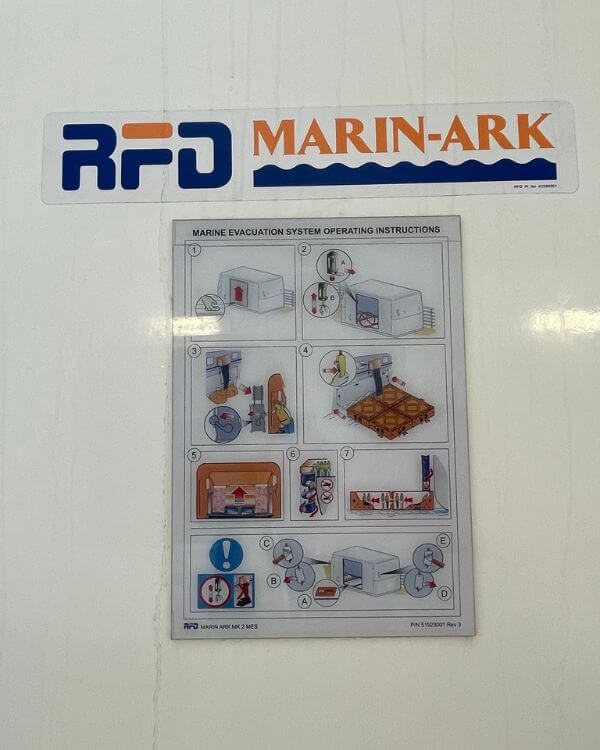
There will be more life rafts on board the ship than necessary. The International Convention for the Safety of Life at Sea (SOLAS) requires that there be life rafts kept on both sides of the ship that could sufficiently hold the entire capacity of the ship, minus the lifeboat capacity on that side.
That’s in case the ship was to capsize, or some other incident rendered half the lifeboats unusable. In these instances, passengers who were not as mobile would be prioritized in the lifeboats on the opposite side, while physically fit and healthy passengers would join the crew in the life rafts.
(source)
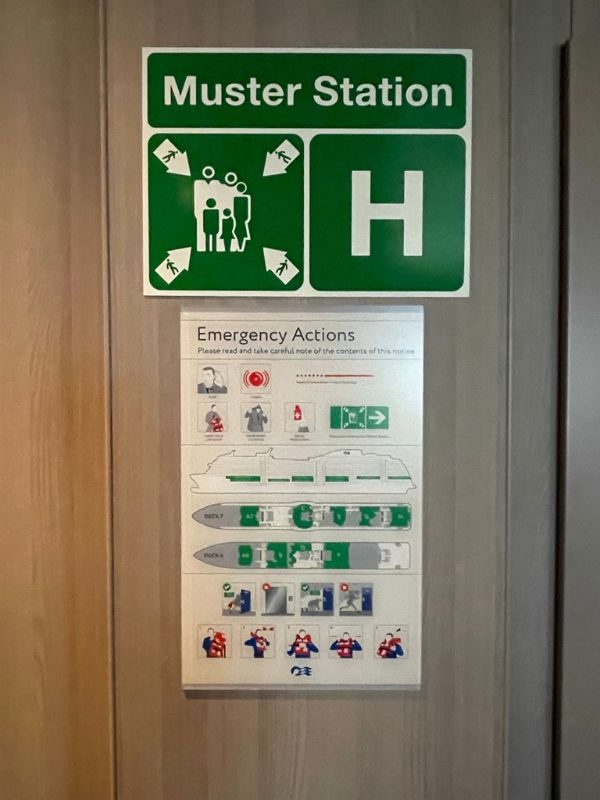
The odds of such an event happening are tiny. In the last 50 years there have barely been any cruise ship accidents at sea, barely ever requiring the use of lifeboats and when they have, they usually haven’t rendered half the ship’s boats unusable. This is excessive caution – which is always a good thing.
Read more: How Many Cruise Ships Have Sunk?
The exception, of course, was the Costa Concordia incident in 2012, but this was due to the arrogance and human error of the Captain. Serious lessons have been learned since.
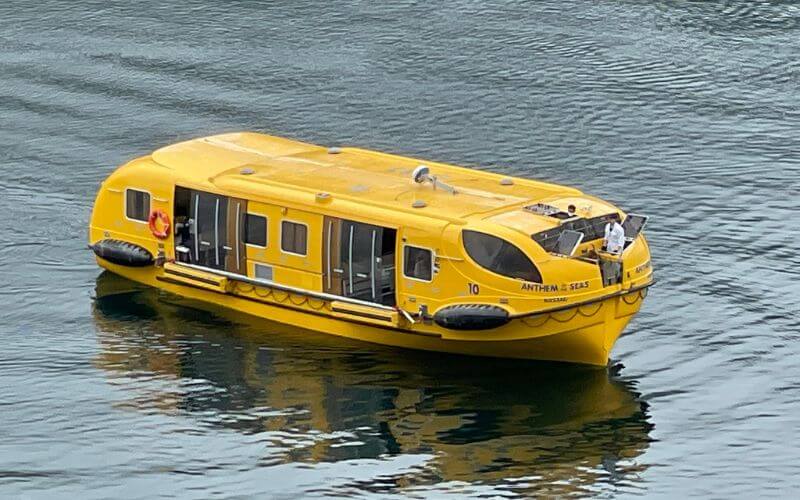
Lifeboat Capacity
Older lifeboats on cruise ships had a maximum capacity of 150 people, which followed the old SOLAS code 4.4.2.1, which limited lifeboats to this size. However, modern lifeboats have been built much larger, with the Schat-Harding CRW55 lifeboat able to hold 370 people.
The SOLAS code does stipulate that larger lifeboats are permitted, provided they meet the same safety standards as those limited to 150 people, which is why these newer lifeboats were permitted (source).
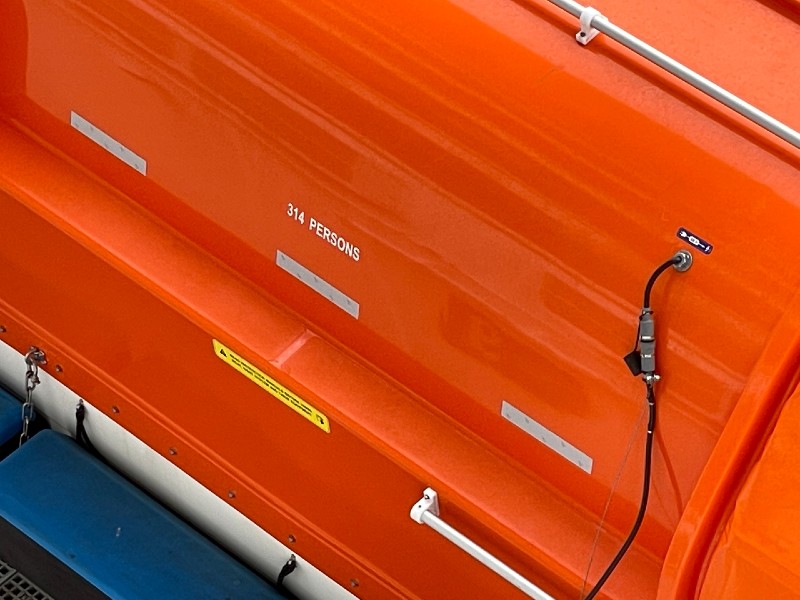
These lifeboats were made necessary with the launch of Oasis of the Seas in 2009, which has a total passenger and crew capacity of 6,700, with a passenger capacity of 5,606. This would require at least 38 lifeboats just for the passengers in the old style, taking up a huge amount of space alongside each side of the ship.
The newer lifeboats offer over twice the capacity but are only around 50% longer. There are 18 of these lifeboats on the Oasis of the Seas, capable of carrying all the passengers and almost all of the crew, but they don’t have to take up the entire length of the ship.
Lifeboats On The Titanic
The Titanic did not have enough lifeboats when it sank. It was carrying just 20 lifeboats, which offered enough capacity for just over half of the people on board, and around a third of the total capacity had the ship been full.

Of the 20 lifeboats, 18 were launched on the night that the ship sank, but many were also under capacity due to poor organisation and the late alarm calls to rouse passengers.
The reason the Titanic didn’t have enough lifeboats was due to the outdated safety regulations at the time, and the complacency of the ship’s owners, White Star Line, who assumed the ship was unsinkable.
There was plenty of space on board the ship to house another 44 lifeboats, which would have been enough. The issue likely wasn’t the cost either – another 32 lifeboats would apparently have only cost $16,000 – a tiny fraction of the total $7.5 million cost of the ship (source).
The safety regulations on lifeboats were massively overhauled following the sinking of the Titanic, which included the formation of the International Convention for the Safety of Life at Sea (SOLAS) in 1914 (source).
Lifeboat Location
Lifeboats on a cruise ship are stored on both sides of the ship on a deck that is easy for the majority of passengers and crew to get to quickly, normally a little below halfway up the ship (since the top decks don’t normally have accommodations).
Passengers must all attend a mandatory safety briefing on the first day of their cruise at their designated muster station. This will explain where passengers need to go in the event of an emergency, and what they need to do. That way, all passengers are prepped with the knowledge of what to do if they must get to a lifeboat.
Lifeboats are always coloured orange – this is to increase their visibility both for passengers and for rescue ships in the ocean. If any passenger were to accidentally fall overboard, the orange colour also makes it easier for them to make their way to the lifeboat while swimming.
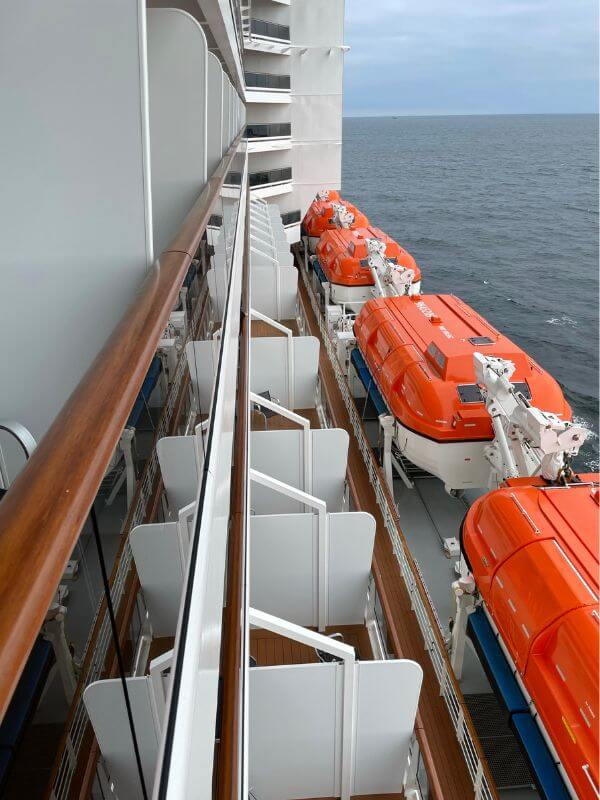
Inside a Lifeboat
Cruise ship lifeboats – and any lifeboats – are required to have a number of items on board for safety, including flares and smoke signals, survival tools including an illuminated compass, fresh water and food, and first aid equipment.
Liferafts aren’t required to have quite as many items, but will have sufficient materials to keep everyone on board safe and well for at least 24 hours if necessary.
Here’s what a life raft storage container looks like on a cruise ship…
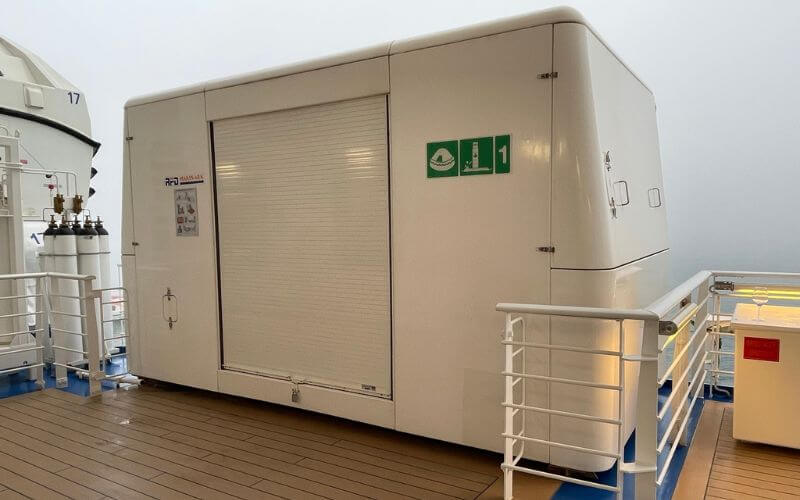
There is Food
All lifeboats are required to store food rations, with at least 10,000 kJ (2,390 calories) of energy for each person up to capacity. The food must be stored in airtight and watertight packaging.
Tinned food is common, and lifeboats must keep three tin openers on board as part of their equipment list.
Fresh water is also required – three litres per person. Regulations do permit that lifeboats only need to store two litres per person if they also have desalination materials available to convert seawater into fresh water.
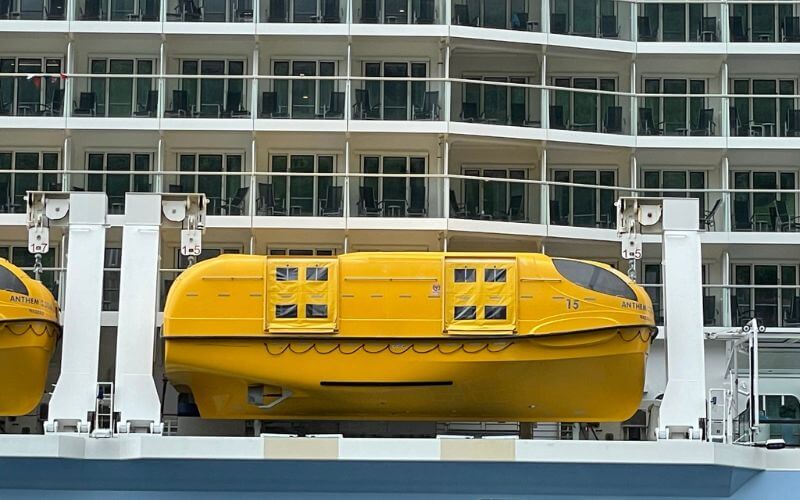
Only Newer Lifeboats Have a Toilet
Older lifeboats often won’t have toilets on board, but the newer ‘mega lifeboats’, first introduced on Oasis of the Seas, do have a toilet. Lifeboats are designed as life-saving amenities and so toilets were not considered a priority on older models.
With modern signalling and communications, anyone who was in a lifeboat could expect to be rescued relatively quickly and would be able to make use of the toilets on their rescuing vessel if necessary.
And if it came down to it, you would just have to try to go over the side if possible, but in a safe way. This would obviously be much easier for men than women!
A more common issue would be sickness, where seasick passengers would be encouraged to vomit over the sides of the boat if possible, so that it didn’t make other passengers unwell.
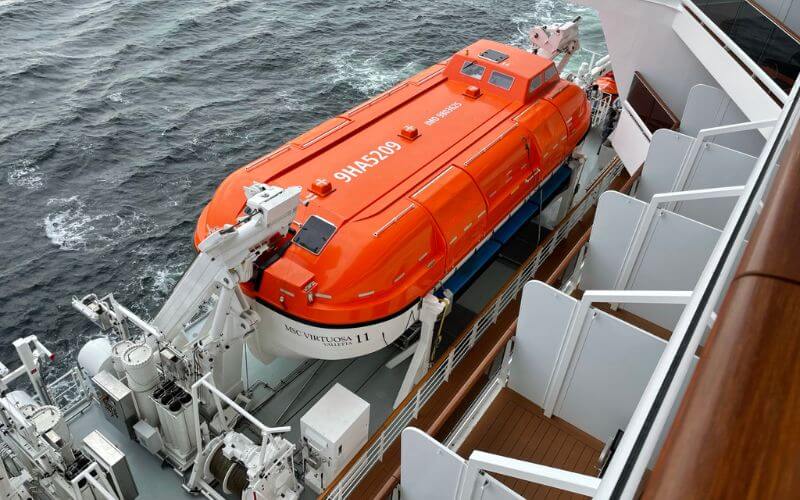
They’re Powered by Engines
Cruise ship lifeboats are designed to ensure that the lifeboats can reach a safe distance from the sinking ship quickly if necessary. Life rafts do not always have engines, but they can be launched further out to sea and have oars if required.
Lifeboats and life rafts aren’t designed for long-distance travel. They are designed purely to keep you safely afloat until larger rescue vessels can reach you. Engines are, therefore, useful as a safety measure, but they aren’t designed to get you to land (unless your ship sinks close to the coast anyway).
Sometimes, a cruise ship life lifeboat will double up as a tender boat. These are used to transport guests to the shore at ports where it’s not possible to dock.
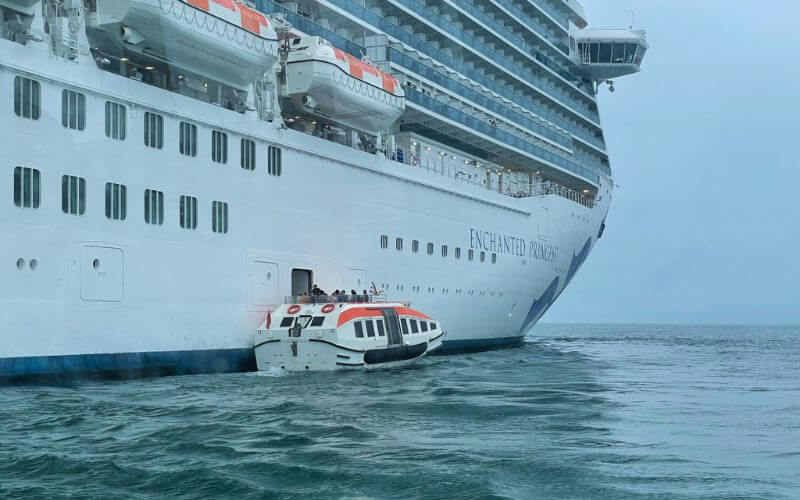
To Conclude
We don’t live in the same times as the sinking of the Titanic, and there are always enough life rafts and lifeboats on cruise ships to safely evacuate anyone on a ship that’s in trouble.
But these are rare incidents anyway. Ships don’t tend to get into trouble any more thanks to the advanced sensors and navigation systems, and the massive size of ships, which allows them to traverse freak waves.
If you’re worried about whether a ship will have enough lifeboats for you, then relax – they will, but you’ll never need to use them anyway.
TODAY’S BEST CRUISE DEALS!
Don’t miss these offers…
Related Posts:
- How Many Cruise Ships Have Sunk?
- Titanic Vs Modern Cruise Ships
- Secret Codes On Cruise Ships
- Are Cruises Safe? 8 Threats To Consider
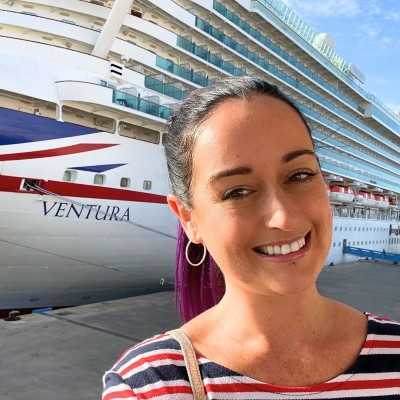
Jenni Fielding is the founder of Cruise Mummy. She has worked in the cruise industry since 2015 and has taken over 30 cruises. Now, she helps over 1 million people per month to plan their perfect cruise holidays.

